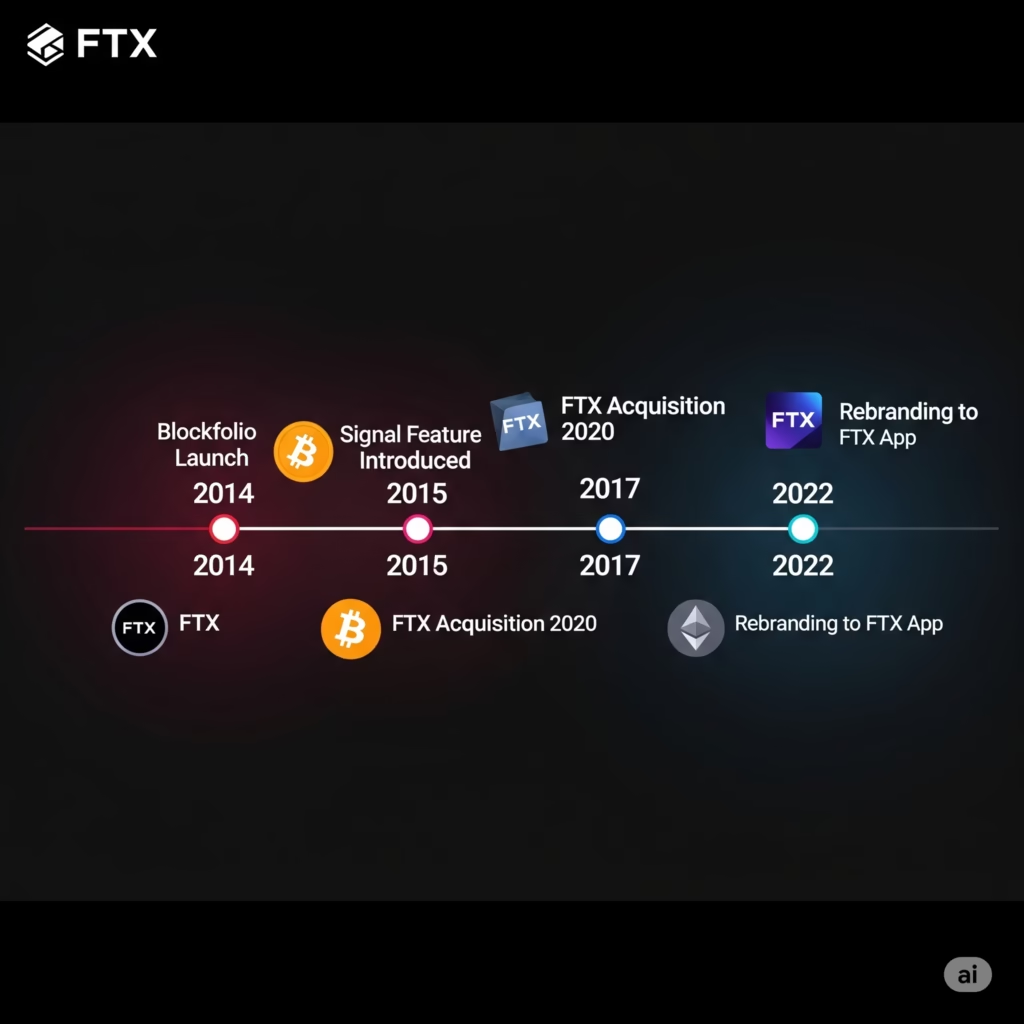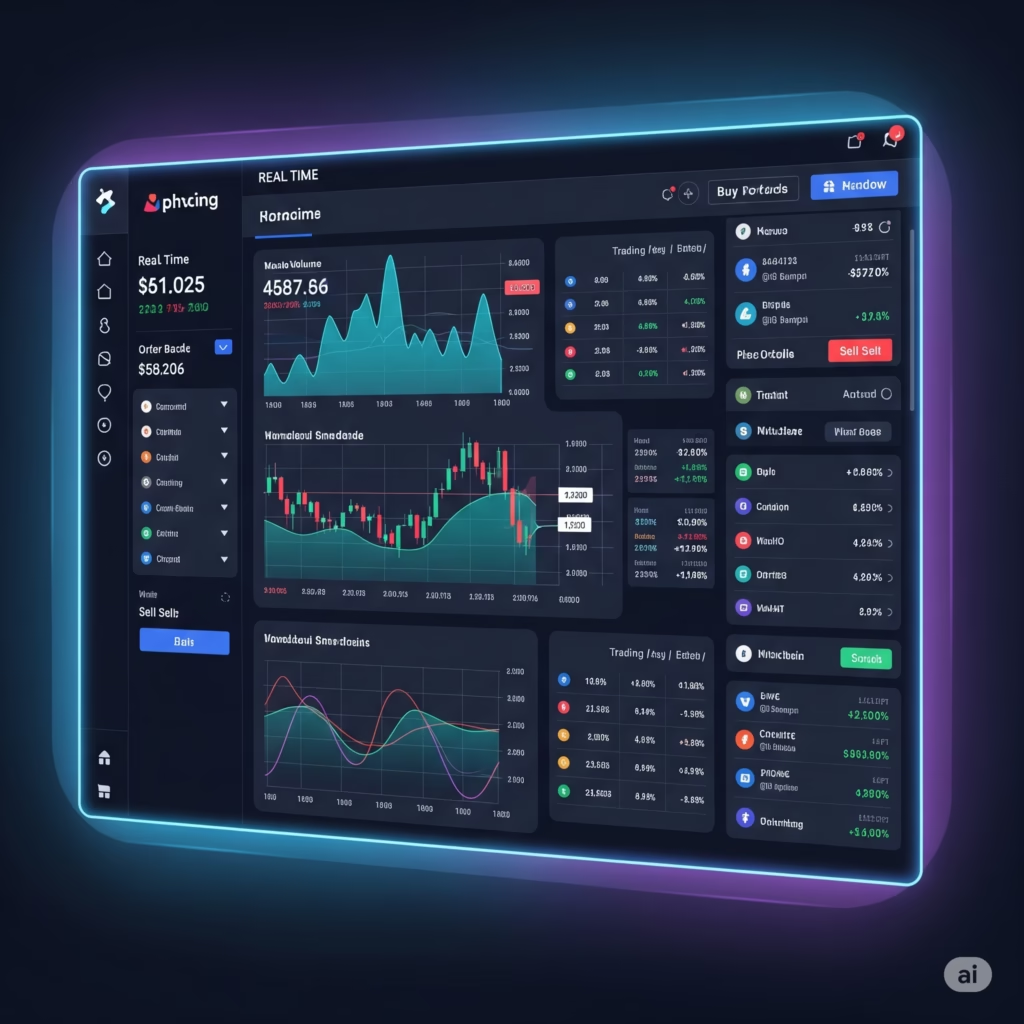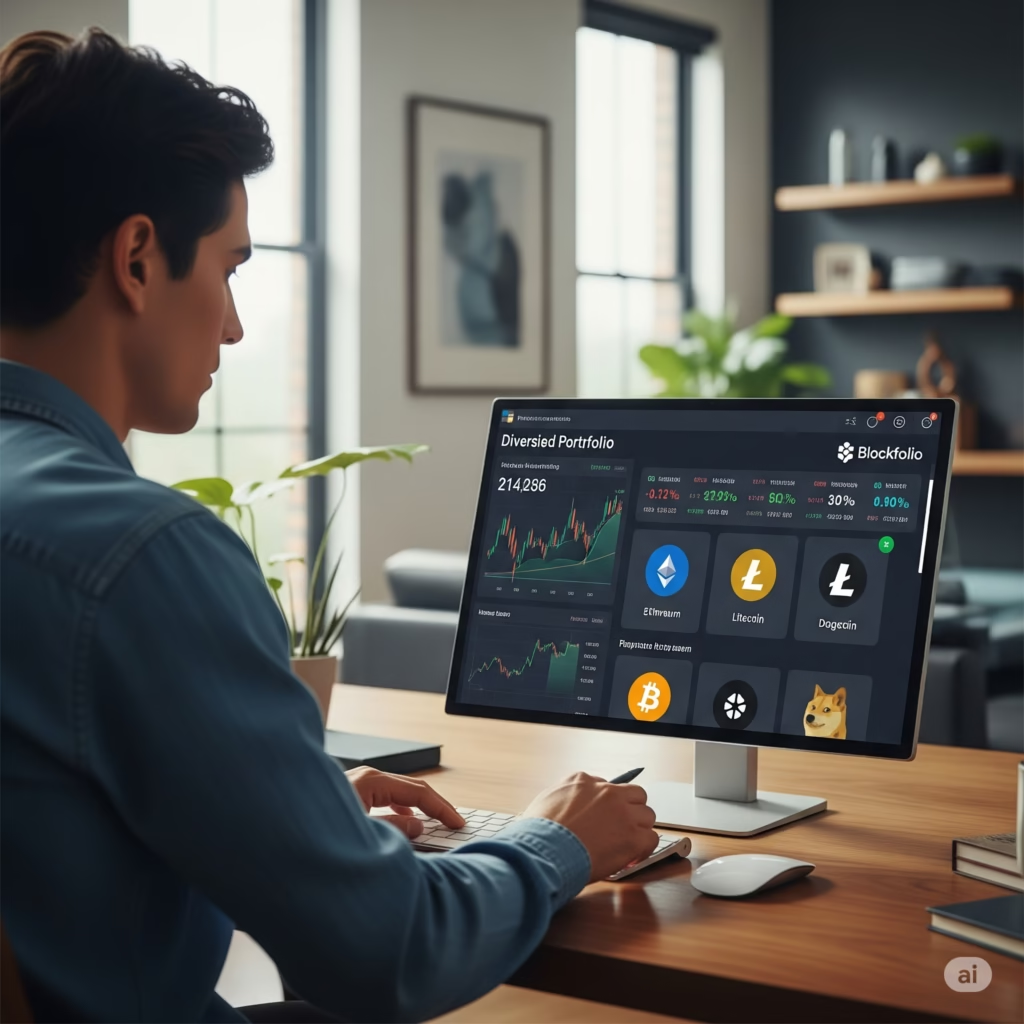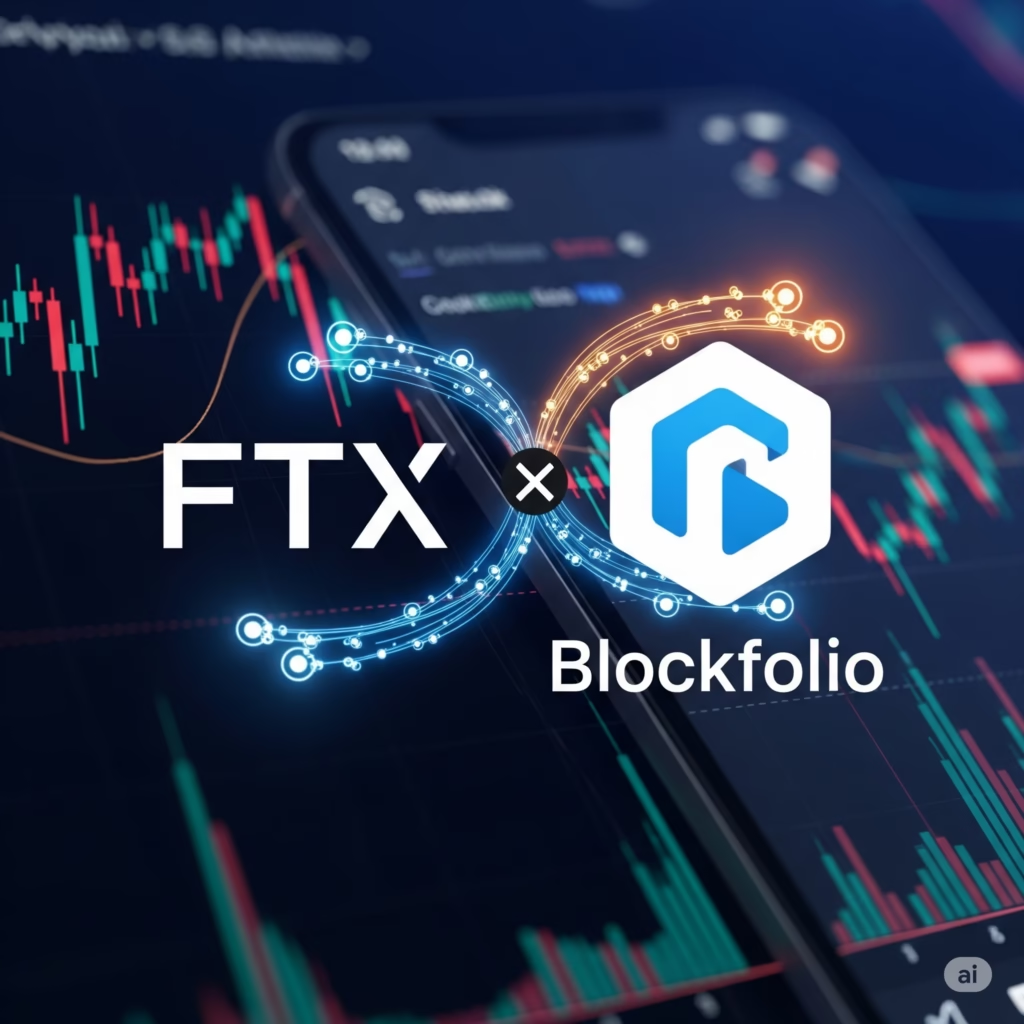
The History of Blockfolio Portfolio Tracker to FTX Integration
Blockfolio is a name many crypto investors are familiar with, as it once served as one of the most popular portfolio tracking apps in the crypto space. The app allowed users to manage their cryptocurrency investments and track market prices in real-time. However, the history of Blockfolio is not just about its innovative features; it is also intertwined with the rise and fall of major entities in the cryptocurrency world, most notably the FTX exchange.
Table of Contents
Top 3 Crypto Portfolio Trackers for 2025
1. The Early Years: The Birth of Blockfolio
Blockfolio was founded in 2014 by Ed Moncada and Santiago Rios, two entrepreneurs who saw a significant gap in the market. Crypto investors lacked an easy-to-use platform for tracking their investments. While there were several exchanges where people could buy and sell cryptocurrencies, there was little infrastructure for monitoring portfolios across various platforms.
Blockfolio’s launch was simple yet powerful. The app allowed users to enter their cryptocurrency holdings manually and provided real-time price data, notifications, and portfolio performance metrics. Its clean design and ease of use made it a go-to tool for crypto enthusiasts, especially as the cryptocurrency market started gaining traction during the 2017 bull run.
By 2017, Blockfolio was growing rapidly, attracting millions of users. The app’s developers continued to refine its functionality, adding more coins and tokens, improved charts, and price alerts. These additions enhanced the user experience, making it the most popular portfolio tracker at the time.
2. Blockfolio’s Role in the Crypto Boom
As the popularity of Bitcoin, Ethereum, and other cryptocurrencies surged in 2017, the demand for tools like Blockfolio skyrocketed. The rise of altcoins also contributed to the app’s growth, as users sought ways to manage increasingly diverse portfolios.
During this period, Blockfolio became indispensable for many traders and investors who needed a reliable, user-friendly way to monitor their holdings without having to constantly log into exchanges or check prices manually.
Moreover, Blockfolio’s simplicity was one of its strongest selling points. It did not require an account to use, and users could start tracking their portfolios in seconds. The app’s “News” feature also allowed users to stay updated on important crypto market developments, making it not just a tracker, but also an informational hub for the crypto world.
3. The FTX Acquisition: A New Era for Blockfolio
In 2020, Blockfolio was acquired by FTX, one of the largest cryptocurrency exchanges at the time. The deal was valued at around $150 million, marking a significant milestone in the history of Blockfolio. With this acquisition, Blockfolio’s integration with FTX allowed the app to expand its features and capabilities beyond simple portfolio tracking.
FTX recognized the potential of Blockfolio as a customer acquisition tool. By integrating trading functionalities into Blockfolio, users could not only track their portfolios but also trade cryptocurrencies directly within the app. This new feature was designed to compete with other crypto apps, such as Coinbase and Binance, which offered similar services.
Blockfolio’s transformation from a simple tracking tool to a trading platform was a significant shift. However, this change also introduced some risks, as Blockfolio now relied on FTX’s infrastructure, which later faced serious challenges.
4. The FTX Collapse and Its Impact on Blockfolio
In 2022, the crypto world was rocked by the dramatic collapse of FTX. Founded by Sam Bankman-Fried, FTX had been one of the largest and most influential exchanges in the world. However, the company faced a liquidity crisis and filed for bankruptcy, leading to the downfall of the exchange.
This collapse had significant implications for Blockfolio. As the app was now integrated with FTX, the turmoil surrounding the exchange led to a loss of trust in the platform. Blockfolio’s reputation, once solid as an independent portfolio tracker, was now at risk.
Despite the fallout, Blockfolio continued to operate under its new name—FTX Blockfolio. However, the uncertainty surrounding FTX’s future left many wondering about the app’s long-term viability.
5. The Future of Blockfolio: What Lies Ahead?
With FTX’s bankruptcy, the future of Blockfolio remains uncertain. Users who had once trusted the app as a secure place to track their portfolios now had to reconsider their options. While some have speculated that Blockfolio may be rebranded or sold to another company, others argue that its integration with FTX could be the end of the road for the app.
However, there are still many users who appreciate the app’s original functionality, which could pave the way for a potential comeback. If Blockfolio can re-establish itself as a reliable and independent tool for crypto investors, there is still hope for the app’s future.

Is Blockfolio still operational after the FTX collapse?
Yes, Blockfolio is still operational, though its future is uncertain following the FTX collapse. The app continues to offer portfolio tracking services, but the integration with FTX has raised concerns about its stability.
How do I use Blockfolio to track my crypto investments?
To use Blockfolio, download the app and manually enter your cryptocurrency holdings. The app will provide real-time price data, portfolio analysis, and market news to help you stay updated.
Will Blockfolio ever return to being an independent platform?
While it’s difficult to say, the possibility of Blockfolio returning to its independent roots depends on the company’s future strategies. The app could potentially rebrand or offer its services outside of FTX’s control.
Can I trade cryptocurrencies directly on Blockfolio?
Yes, after being acquired by FTX, Blockfolio integrated trading features, allowing users to buy, sell, and trade cryptocurrencies directly within the app.
Blockfolio’s Legacy in the Crypto Ecosystem
The history of Blockfolio highlights its significant impact on the cryptocurrency world. From its humble beginnings as a simple portfolio tracker to its evolution into a trading platform under the FTX umbrella, Blockfolio has played a pivotal role in shaping how investors manage their cryptocurrency assets.
While the recent events surrounding FTX have cast a shadow on Blockfolio’s future, the app’s legacy as one of the most trusted crypto portfolio tools cannot be overlooked. Whether it will continue to thrive as part of the FTX ecosystem or return to its roots as an independent entity remains to be seen, but one thing is clear: Blockfolio’s story is far from over.
Certainly! Here’s a comprehensive article draft titled “History of Blockfolio: From Crypto Portfolio Tracker to FTX Integration”, structured to meet your specifications:

Rise to Prominence
Blockfolio’s success can be attributed to its continuous innovation and responsiveness to user feedback. The app expanded its features to include:
- Signal Feature: Allowing project teams to communicate directly with their communities.
- News Integration: Aggregating news from various sources to keep users informed.
- Comprehensive Asset Coverage: Supporting thousands of cryptocurrencies and tokens.
These enhancements solidified Blockfolio’s position as a go-to app for crypto portfolio management.
Integration Process
Post-acquisition, FTX and Blockfolio worked towards integrating their platforms to offer a seamless trading and portfolio management experience. Key developments included:
- Rebranding: Blockfolio was rebranded as the FTX app, reflecting its new ownership.
- Enhanced Trading Features: Users could execute trades directly within the app, leveraging FTX’s exchange infrastructure.
- Stablecoin Integration: Partnership with Circle to incorporate USDC, facilitating smoother transactions.
These changes aimed to provide users with a comprehensive platform for managing and trading cryptocurrencies.
Impact on the Crypto Ecosystem
The integration of Blockfolio into FTX had several implications:
- Increased Retail Participation: By combining a user-friendly interface with robust trading features, the platform attracted a broader audience.
- Competitive Pressure: Other exchanges and portfolio trackers were prompted to enhance their offerings to keep pace.
- Innovation in Services: The merger set a precedent for integrating portfolio management with trading services, leading to more holistic crypto platforms.
Challenges and Criticisms
Despite the strategic advantages, the integration faced challenges:
- User Concerns: Long-time Blockfolio users expressed apprehension over changes in the app’s focus and functionality.
- Data Privacy: The merger raised questions about data handling and user privacy, especially with the introduction of new KYC and AML policies.
- Platform Stability: Some users reported issues during the transition phase, including glitches and reduced performance.
Current Status and Future Outlook
As of now, the FTX app continues to operate, offering a blend of portfolio tracking and trading features. The platform has expanded its services, including:
- Derivatives Trading: Access to futures and options markets.
- Staking Services: Allowing users to earn rewards on their holdings.
- Educational Resources: Providing users with information to make informed trading decisions.
Looking ahead, the platform aims to further integrate decentralized finance (DeFi) features and expand its global reach.
Frequently Asked Questions (FAQs)
Q1: Why did FTX acquire Blockfolio?
A: FTX acquired Blockfolio in 2020 for $150 million to tap into its massive user base and expand its presence in the retail trading segment. According to CoinDesk, Sam Bankman-Fried aimed to “bridge pro and retail traders under one umbrella.”
Q2: Is Blockfolio still functional after the FTX collapse?
A: After the FTX bankruptcy in 2022, Blockfolio (rebranded as the FTX App) was shut down. The collapse affected millions of users globally. As per The Wall Street Journal, the app’s backend was integrated directly with FTX systems, which made its recovery infeasible.
Q3: Are there alternatives to Blockfolio now?
A: Yes, some popular alternatives include CoinStats, Delta, and CoinMarketCap portfolio. These offer similar features like portfolio tracking, news, and price alerts.
Expert Opinions
Anthony Pompliano, co-founder of Morgan Creek Digital, once stated:
“Blockfolio was the go-to app for every retail crypto investor. Its acquisition by FTX was a strategic move to dominate retail space.” — The Pomp Letter, 2020
Laura Shin, crypto journalist and host of the Unchained Podcast, mentioned:
“Blockfolio’s simplicity and UI were unmatched. It made crypto tracking accessible to the average user. The FTX acquisition was supposed to amplify that experience.”
Quotes from Credible Sources
- Cointelegraph (2020):
“FTX’s purchase of Blockfolio marks a pivotal moment in crypto mergers and acquisitions, potentially shaping the future of retail crypto trading.” - Forbes Crypto (2021):
“Blockfolio’s redesign under FTX’s umbrella brought robust exchange features to a once simple tracking app, reflecting the industry’s shift toward all-in-one solutions.” - TechCrunch (2020):
“This acquisition could signify the next evolution of crypto apps—going from passive tracking to active trading.”
Blockfolio is now FTX



